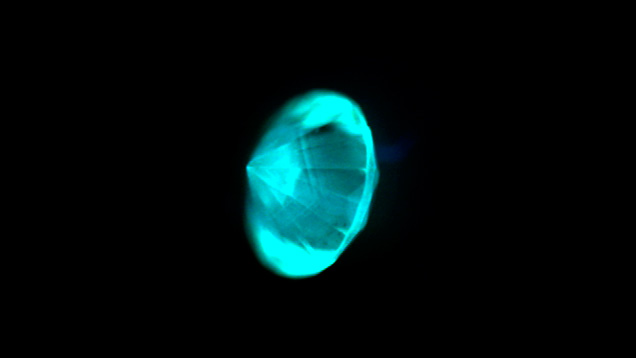Near-Colorless Melee-Sized HPHT Synthetic Diamonds Identified in GIA Laboratory

Recently, the Bangkok lab had the opportunity to examine six melee-sized specimens submitted for synthetics and treatment screening. The transparent, near-colorless round brilliants ranged in size from 0.005 to 0.01 ct (figure 1). Microscopic observation revealed no obvious inclusions. Between crossed polarizing filters, very little or no strain was observed. Infrared absorption spectra showed that four of the samples were type IIa diamonds with no detectable defect-related absorption, while the other two were type IIb diamonds accompanied by uncompensated boron showing moderately strong absorption at approximately 2800 cm–1. Photoluminescence spectra obtained at liquid-nitrogen temperature with 514 and 633 nm laser excitations revealed an emission doublet of the negatively charged silicon split-vacancy defect [Si-V]– at 736.6/736.9 nm for five of the samples, while 830 nm laser excitation showed an emission doublet at 883.0/884.7 nm owing to a nickel-related defect for all six samples (figure 2). DiamondView imaging revealed either blue or green fluorescence, together with characteristic growth features of HPHT synthesis, as seen in figure 3. Strong blue phosphorescence was also observed for all six samples. These gemological and spectroscopic features confirmed that the specimens were grown by HPHT synthesis.

Figure 2. Photoluminescence spectra at liquid-nitrogen temperature of a small near-colorless HPHT synthetic diamond. The spectra displayed emission peaks at 736.6 and 736.9 nm related to a [Si-V]– defect (left, 514 nm laser excitation) and at 883.0 and 884.7 nm associated with a Ni-related defect (right, 830 nm laser excitation).

Figure 3. This DiamondView image of one sample (third from the left in figure 1) shows the characteristic growth features of HPHT-grown synthetic diamonds. DiamondView image by Charuwan Khowpong.
To the best of our knowledge, this is the first examination of near-colorless HPHT synthetics of these sizes by a gemological laboratory. Discovery of these HPHT synthetic diamond melee reaffirms the need to screen the huge volume of near-colorless melee currently in the trade. 


